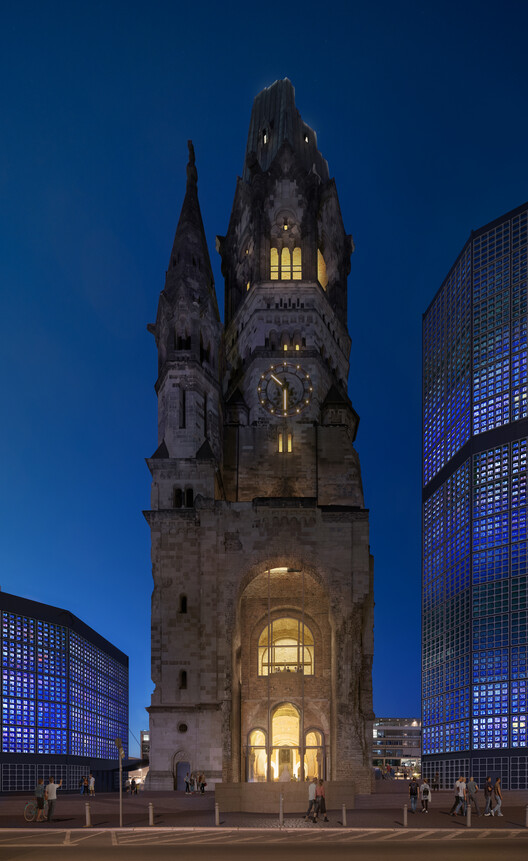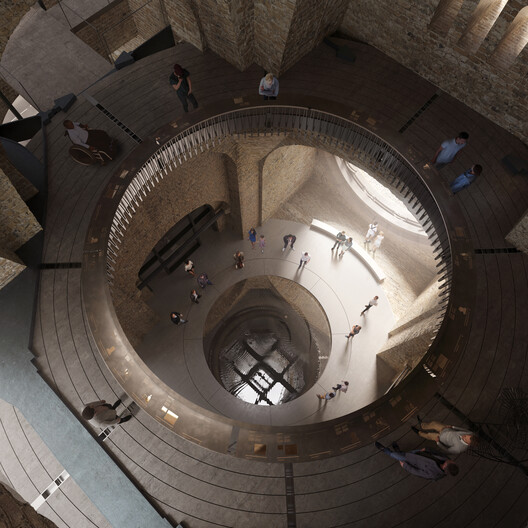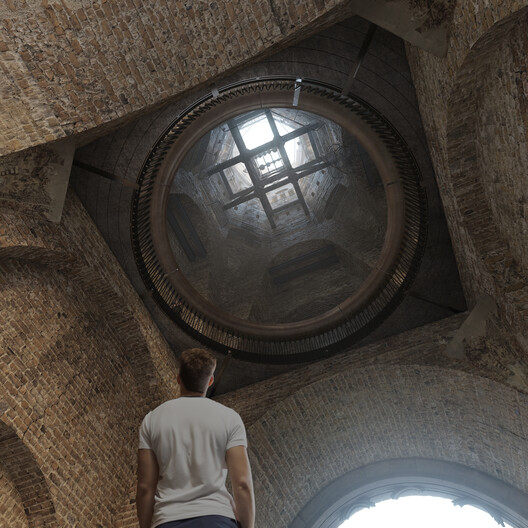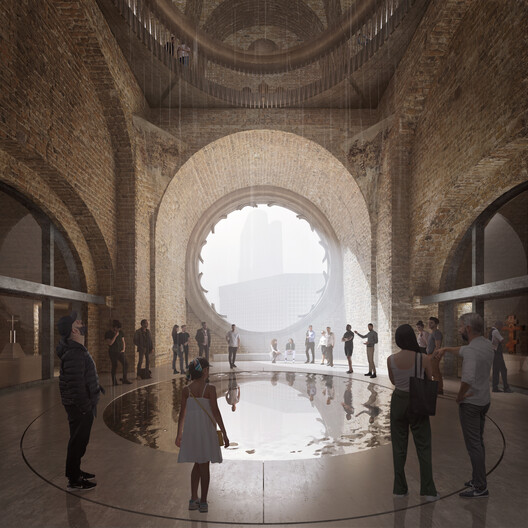The design by Ralph Appelbaum Associates, Berlin, and Heneghan Peng Architects, Dublin, won first prize in an international competition for the reconstruction and expansion of the Kaiser Wilhelm Memorial Church’s Old Tower.

The original West Tower was partially destroyed during an Allied Forces bombing in 1943; the competition’s goal was to rebuild it and bring it back to the tourist circuit as a war memorial and exhibition space.
Emperor Wilhelm II commissioned the church to be constructed in the Neo-Romanesque style between 1891 and 1895, based on the designs of Franz Schwechten.
The church was intended to serve as a religious memorial for his grandfather, Emperor Wilhelm I. The church was severely damaged in an air raid in 1943.

The parts that remained were the altar, the baptistry, the entrance hall, and a piece of the spire. The damaged structure was supposed to be rebuilt after the war, but there were disagreements over how to restore it.
Architect Egon Eiermann was chosen in 1956 after a two-phase competition to head the reconstruction efforts. He suggested razing the ruin and erecting a brand-new structure instead. The proposal caused a stir in the public.
The initiative resulted in a compromise; the ruined tower, which has been referred to as the “heart of Berlin,” was kept and preserved as a war memorial, while the majority of the church was demolished.
The tower was incorporated into a building ensemble consisting of four parts: a square chapel, an octagonal nave, a hexagonal bell tower and a foyer. The rebuilt church was consecrated in 1961.

The Kaiser Wilhelm Memorial Church’s redesign competition will increase the amount of space available for exhibits on the former church porch and build a new visitor centre atop the tower.
The circular pool that is part of the proposal is a new addition that pays homage to the nearby bombed rosette window. In order to “create a continuous, central cavity with atmospheric force,” the design also includes the removal of a portion of the postwar roof.
In recent years, there has been a recurring theme of heritage restoration, with various projects focusing on historic structures damaged by or symbolic of war crimes. Among them is the restoration of the Saxon Palace, a World War II-era historical site in the heart of Warsaw, Poland, which WXCA Architectural Design Studio is scheduled to undertake after an international competition.
Comparably, the Besa Museum in Tirana, Albania, which honours the Albanian code of honour, or “Besa,” and its effects on the Jewish community during the Holocaust, has announced Oppenheim Architecture as the winner of the competition for its redesign and restoration.


